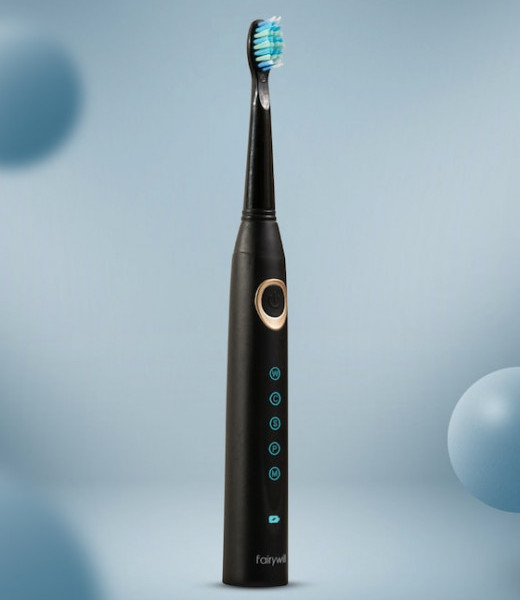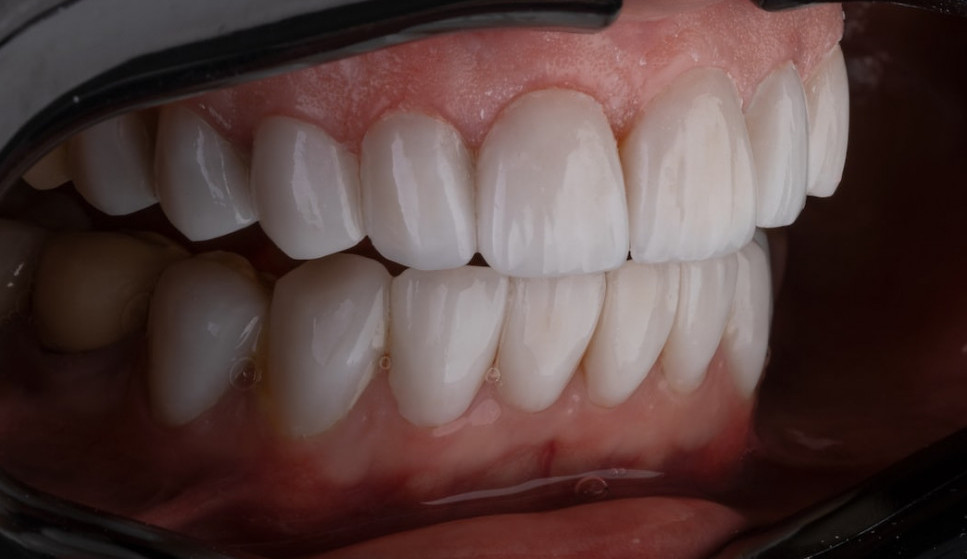There are a lot of doubts about electric toothbrushes. Some people cling to the old manual methods, thinking these are the tried and true ways to a sparkling smile. I hope that you’re open to understanding how the humble electric toothbrush can revolutionize your oral hygiene. It’s not just a fancy gadget; it’s a tool that’s evolved to meet the demands of modern dental care needs.
So, what sets electric toothbrushes apart from manual ones? Their efficiency isn’t just hearsay; there’s science behind them. Electric toothbrushes use a variety of motions – oscillating, rotating, pulsating – to remove plaque and minimize food particles that could lead to dental issues. By getting into the nitty-gritty that manual brushes might miss, they’re key in preventing tooth decay and gum disease.
These nifty devices wouldn’t be worthy of our time if they weren’t sustainable, right? I understand that concern. Electric toothbrushes, with their replaceable heads and rechargeable batteries, minimize waste—a stark contrast to the throw-away culture of manual toothbrushes. Not to mention, the longevity of electric toothbrushes means fewer trips to the dentist and, ultimately, a healthier planet and a healthier you.
This isn’t just about technology and sustainability, though; it’s also about making a real difference in your dental care routine. Admit it, inefficiency can be a deal-breaker, especially when it comes to something as important as our health. I’m here to help you with that. In the following section, you’ll find out more about choosing the best electric toothbrush specifically designed for sensitive teeth, ensuring you don’t compromise on comfort or quality.
Selecting the Ideal Electric Toothbrush for Sensitive Teeth
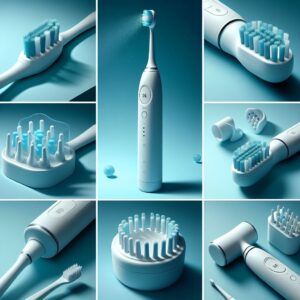
Do you wince at the thought of a cold drink or dread the sharp zing when biting into something sweet? If that’s been your ordeal, tooth sensitivity might be knocking on your door. But here’s some soothing news: the right electric toothbrush can be a game-changer for those with sensitive teeth.
When picking an electric toothbrush meant for sensitive teeth, it isn’t just about the price or the brand. It’s about the subtleties that match your oral care needs. Brush head design, bristle softness, and pressure sensors play pivotal roles in the gentle care of your sensitive teeth.
Let’s focus on what to zero in on. Firstly, find a toothbrush that boasts soft bristles; they’re more forgiving on your enamel and gums. Next, lean towards models with pressure sensors that alert you when you’re brushing too hard, preventing further irritation.
But that’s not all. Some toothbrushes come with specialized modes for sensitive teeth, offering gentle vibrations that don’t agitate your oral nerves. Additionally, look for toothbrushes that have a seal of approval from dental associations, which serves as a beacon of trust and efficacy.
I’m going to guide you with a handful of recommendations that cut for those seeking gentle, yet effective, oral care. From devices that flexibly adjust to your brushing style to those with state-of-the-art motion technology, your journey to finding that perfect brushing companion starts here.
==> Check out this Electric Toothbrush for sensitive teeth!
The Advantages of Switching to an Electric Toothbrush
There’s a lot of opportunity to make the switch from a manual to an electric toothbrush, especially when it comes to enhancing your oral hygiene. In my experience, the transition brings a variety of benefits that might not be immediately apparent, but they are indeed significant.
First, I’m going to talk about the general improvements you’re likely to observe in your overall oral health. Electric toothbrushes incorporate advanced cleaning technologies, like rotating or oscillating movements, that are designed to remove more plaque and bacteria than traditional brushing methods. This can lead to a downturn in tooth decay and gum disease. Plus, modern electric toothbrush heads are specially engineered to promote healthier gums and teeth while also combating bad breath.
Now, you’re probably thinking about the time commitment. Well, that’s where another advantage comes into play. Many electric toothbrushes include built-in timers to ensure that you brush for the dentist-recommended two minutes. This feature not only optimizes your brushing time but also supports the establishment of a consistent oral care routine.
Ease of use can’t be overlooked, either. An electric toothbrush requires less manual effort, making it a quicker and more accessible way to keep your teeth and gums clean and healthy. For many people with sensitive teeth or those who have difficulty with manual dexterity, this is a game-changer. And, contrary to what you might expect, over time, electric toothbrushes can be kinder on your wallet. While the initial investment may be higher than a manual toothbrush, the only component you need to replace regularly is the brush head, which is often quite affordable.
You can always adjust your approach down the road, but if you’re looking for results that are both immediate and long-lasting when it comes to oral health, an electric toothbrush is a smart choice. You don’t need to break the bank to find a quality model, and the improvements to your dental care routine can begin right from your first use.
Are Electric Toothbrushes better than manual ones?
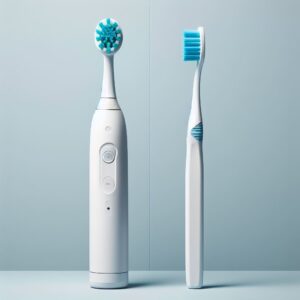
There are different opinions on the best way to brush your teeth when it comes to oral hygiene.
The debate between manual and electric toothbrushes is one of the most important in dentistry.
Advantages of Electric Toothbrush:
Brushing with an electric toothbrush is a quick and easy way to keep your teeth and gums clean and healthy.
An electric toothbrush with a rotating or oscillating head, which helps remove plaque and bacteria from your teeth requires less effort for the best cleaning results.
All modern electric toothbrushes have a built-in timer to make sure you’re brushing properly. Proper brushing requires you to brush for two minutes to make sure you clean your mouth thoroughly.
Replacing the brush head is usually quite affordable.
A manual toothbrush, on the other hand, relies on your brushing motion to clean your teeth.
Advantages of Manual Toothbrush:
Manual brushes are cheaper than electric brushes.
More eco-friendly options are available.
Smaller and easier to take anywhere and leave more space for gadgets.
To get the best cleaning effect from an electric or conventional toothbrush, you must thoroughly and regularly clean the inside and outside of all teeth.
We will conclude by saying that electric toothbrushes are better than manual ones.
They are more affordable in the long run as you only need to change the toothbrush head every few months.
Simply because they have features that help remove plaque more effectively, leading to healthier teeth. Of course, using a manual toothbrush is always better than not brushing at all.
==> Check out this bundle to improve your oral health!
Brushing Technique: The Right Way Forward
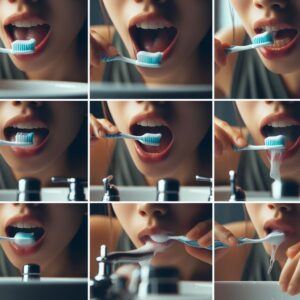
Brushing your teeth accurately is just as crucial as the type of toothbrush you use. Whether you’ve got an electric toothbrush designed for sensitive teeth or you’re sticking with a manual one, technique is key. I’m going to explain the proper method to ensure you’re getting the most out of your brushing sessions.
First off, always start with a moist toothbrush head. This isn’t just about comfort; it helps the toothpaste spread more evenly. Drop a pea-sized blob of toothpaste onto the brush – that’s all you need. Apply too much, and you’re just going to create unnecessary foam and mess.
Slip the toothbrush into your mouth at about a 45-degree angle to your gums. This angle isn’t arbitrary – it’s optimal for getting the bristles just beneath the gumline, where plaque likes to hide.
Tackle those front teeth with short, tooth-width strokes. The back-and-forth motion often seen in cartoons won’t cut it; you’re aiming for gentle but effective sweeps. For the back teeth, switch to a rolling motion to cover the contoured surfaces.
Remember, if your toothbrush is electric, let it do the work. Your job is to guide it to all the surfaces of each tooth, not to scrub vigorously. Many electric toothbrushes have a pressure sensor to keep you from brushing too hard, which is a bonus for sensitive teeth holders.
In conclusion, the path to optimal dental health isn’t strewn with fancy gimmicks but paved with consistent, correct brushing habits. A good electric toothbrush can be a game-changer for those with sensitive teeth, provided you choose one that resonates with you and use it as advised. Combine this with daily flossing, and you’re set for a future with less dental distress. Your first attempt at perfecting your brushing routine doesn’t need to be your last – you can always adjust your approach. Just don’t focus too much on perfection; it’s more about consistency and technique.

